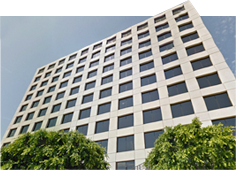EB-5 Permanent Residence
(Green Card Based on Investment)
(New: Read our Article about the Latest in EB-5 Reauthorization in 2022 here.)
Overview
In 1990, Congress created the EB-5 (“Fifth Preference”) immigration category to stimulate the U.S. economy through job creation and capital investment by foreign investors. As a part of the program, investment into a certain number of Regional Centers designated by USCIS based on proposals for promoting economic growth has been authorized.
Investment in a New Commercial Enterprise
All EB-5 investors must invest in a new commercial enterprise, which is a commercial enterprise. The entity can take the following forms:
- Corporation
- A sole proprietorship
- Partnership (whether limited or general)
- Holding company
- Joint venture
- Business trust or other entity, which may be publicly or privately owned
Note: this definition does not include certain noncommercial activity such as owning and operating a personal residence.
The commercial enterprise must have been:
- Established after Nov. 29, 1990, or
- Established on or before Nov. 29, 1990, that is:
- Purchased and the existing business is restructured or reorganized in such a way that a new commercial enterprise results, or
- Expanded through the investment so that a 40-percent increase in the net worth or number of employees occurs
Regional Centers as a Qualifying Investment
In addition to individual business enterprises, EB-5 visa applicants can also invest in EB-5 Regional Centers. Regional Centers administer EB-5 projects. Immigrant investors may prefer to invest in a Regional Center project because the investor will not have to independently set up the EB-5 projects.
Required Investment Amount and TEAs
EB-5 applicants are required to invest either $800,000 or $1.05 million capital amount into a U.S. commercial enterprise. The EB-5 investment can take the form of cash, inventory, equipment, secured indebtedness, tangible property, or cash equivalents. Investment capital cannot be borrowed.
If the investment is made in an entity that is located in a Targeted Employment Area TEA, the required investment is decreased from $1.05 million to $800,000. A TEA is either a rural area or an area that has at least 150 percent of the national unemployment rate at the time of the EB-5 investment. Rural areas are geographic regions that are outside of a city that has a population of 20,000 or more. Rural areas can also be geographic regions that are outside of what the U.S. Office of Management and Budget has designated as metropolitan statistical areas.
EB-5 Job Creation Requirements
EB-5 investments result in the creation of 10 full-time jobs for U.S. workers. These jobs must be created within the 2-year period after the investor has received their conditional Permanent Residency. In some cases the investor must be able to prove that their investment led to the creation of direct jobs for employees who work directly within the commercial entity that received the investment.
EB-5 Regional Center Investors typically only must prove that 10 full-time, indirect or induced jobs will be created if the investment is to be made in the Regional Center. Indirect jobs are those created in businesses that supply goods or services to the EB-5 project. Induced jobs are jobs created within the greater community as a result of income being spent by EB-5 project employees.
How Long Does the Process Take
The road to Permanent Residence through the EB-5 category is a two-step process. The first step is Conditional Residence (essentially, a two-year Green Card), and the second step is Permanent Residence.
Once the attorney has acquired all the necessary documents for filing the first step, I-526 it will take approximately 10-12 months to process the documentation with immigration authorities. Subsequently, if the investor is in the U.S., an application for adjustment of status can be made, and – unforeseen issues notwithstanding – the investor will have their conditional Green Card within 3-6 months. The EB-5 process is one of the quickest ways to permanent residency. If the applicant is abroad and an immigrant visa will need to be pursued, the process will be roughly the same, with several more months of wait possible, depending on the country.
The second step is filing to remove the conditions on residency, which will need to be done within 90 days of the two-year anniversary of the grant of conditional residence. That step typically takes anywhere from 4-8 months, but once filed, the applicant will receive updated employment and travel authorization and is permitted to stay in the U.S., despite expiration of conditional residence.
More Information
Schedule a consultation to explore whether the EB-5 is appropriate for your immigration goals. Certain entrepreneurs and investors wanting to start and develop a business in the U.S. should also review eligibility requirements for the E-2 and other business visa options.






